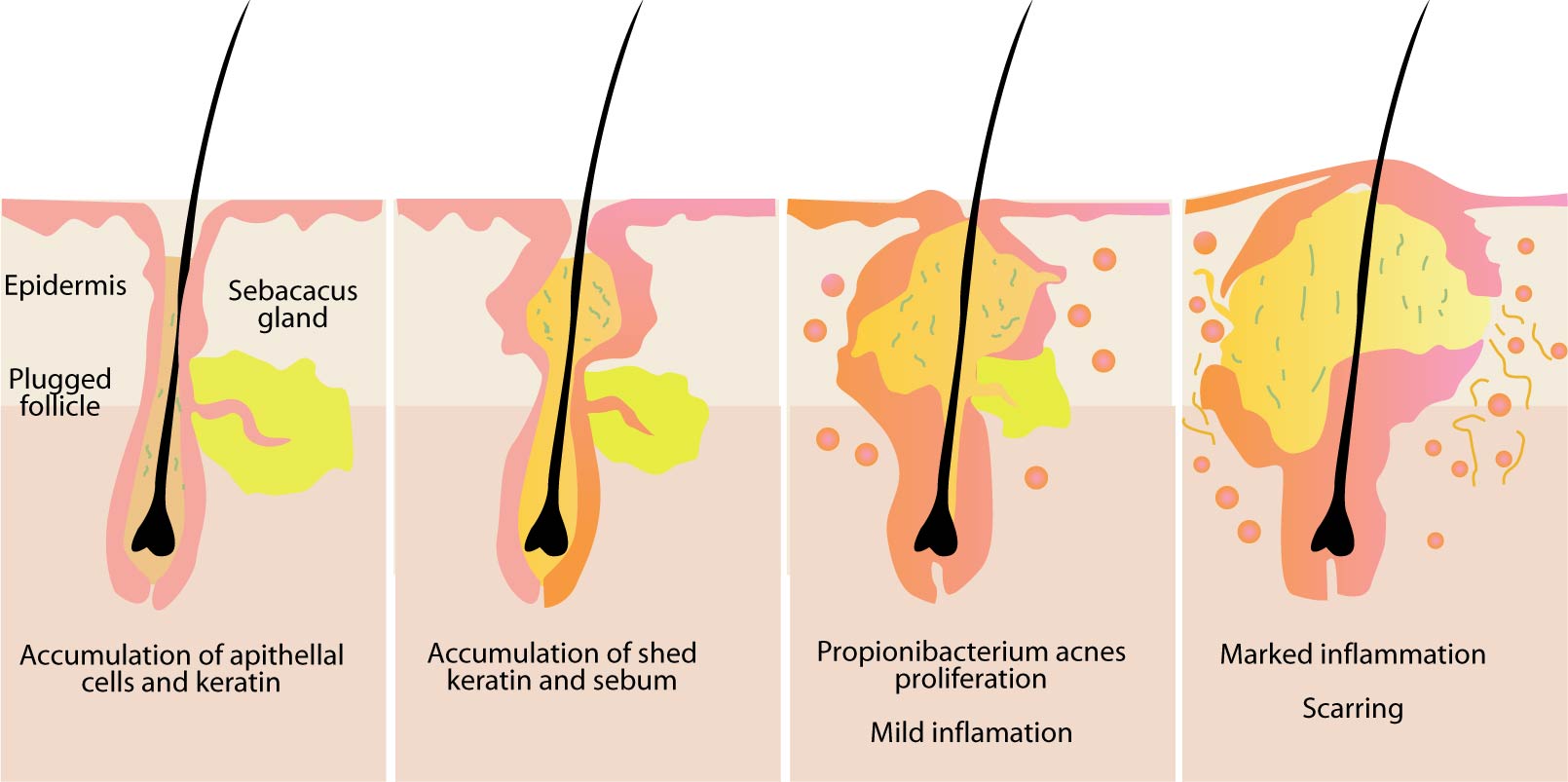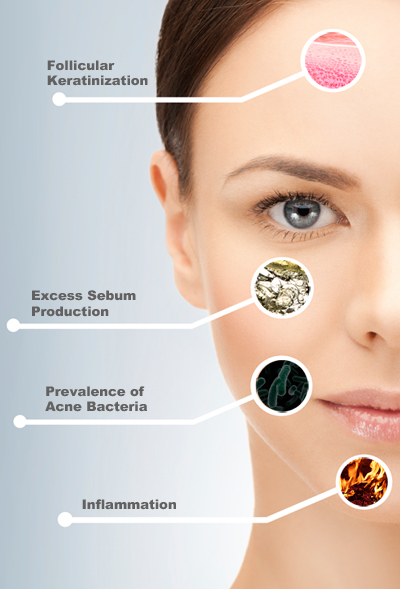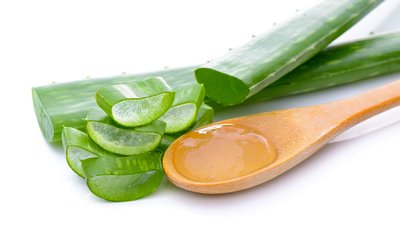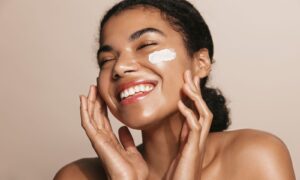
All acne is not, actually, created equal. This makes perfect sense, seeing as there are so many factors — i.e. hygiene, hormones, and genetics — that can both lead to and exacerbate your breakouts. But knowledge is power, and just knowing that there are different types, and that each kind requires its own plan of attack, puts you ahead of the clear-skin curve. Once you figure out what you’re working with, it gets far easier to treat.
The Four Main Causes of AcneFor those who suffer from acne, the skin’s natural rhythm of oil production and sloughing of dead skin cells is not in balance, as it is for those with healthy skin. Four principle factors have been identified:

Follicular keratinization – Acne sufferers tend to have abnormally "sticky" skin cells, be
cause of this, dead skin cells do not slough or shed as they should and instead plug the hair follicle. This leads to a build-up of oil.
Excess sebum production – Many acne sufferers have overactive sebaceous glands. This causes the production of greater quantities of sebum than is common.
Colonization of Propionibacterium acnes (P. acnes) – The skin environment of some individuals tends to be more hospitable to P. acnes, the bacteria that cause acne lesions.
Inflammation – Each of the three scenarios above may cause inflammation. When inflammation occurs, the acne condition worsens and may lead to scarring
Effective Solutions for Acne Treatment
1. Use products containing Salicylic Acid and Glycolic Acid for treatment of Follicular kertanization. By opening clogged pores, salicylic acid helps to reestablish the normal skin cell replacement cycle. It is further beneficial due to its antimicrobial and antiseptic properties. Glycolic acid is the smallest, molecularly, of all the alpha hydroxy acids and can, therefore, penetrate between cells to loosen dead skin, remove build-up inside the hair follicle, and open clogged pores, comedones and other impactions in oily areas.

2. For inflammatory acne use products containing ingredients like aloe vera and arnica. Of the more than 200 active components in aloe, it contains salicylic acid and sterols, both of which work to inhibit inflammation. Arnica features anti-inflammatory and antibacterial properties, and aids in the healing of topical skin wounds.

3. Products containing tea tree oil is best used for
P.acnes. Extracted from the leaves of the Australian Melaleuca Alternafolia tree, topical application of tea tree oil helps to reduce bacteria on the skin, lessens inflammation and generally improves the symptoms of acne. We recommend using the Eminence Organics Facial Recovery Oil. This toning and hydrating oil created with precious herbs and nourishing oils soothes and renews sensitive and aging skin. This is a luxurious facial oil suitable for all skin types.
4. Sulfur is great for excess sebum production. One of only a handful of over-the-counter acne treatments to secure FDA approval, sulfur is among the oldest medicines in use. In the treatment of acne, it reduces oil gland activity and dissolves the skin’s surface layer of dry, dead cells. Additionally, it inhibits the growth of P. acnes.


